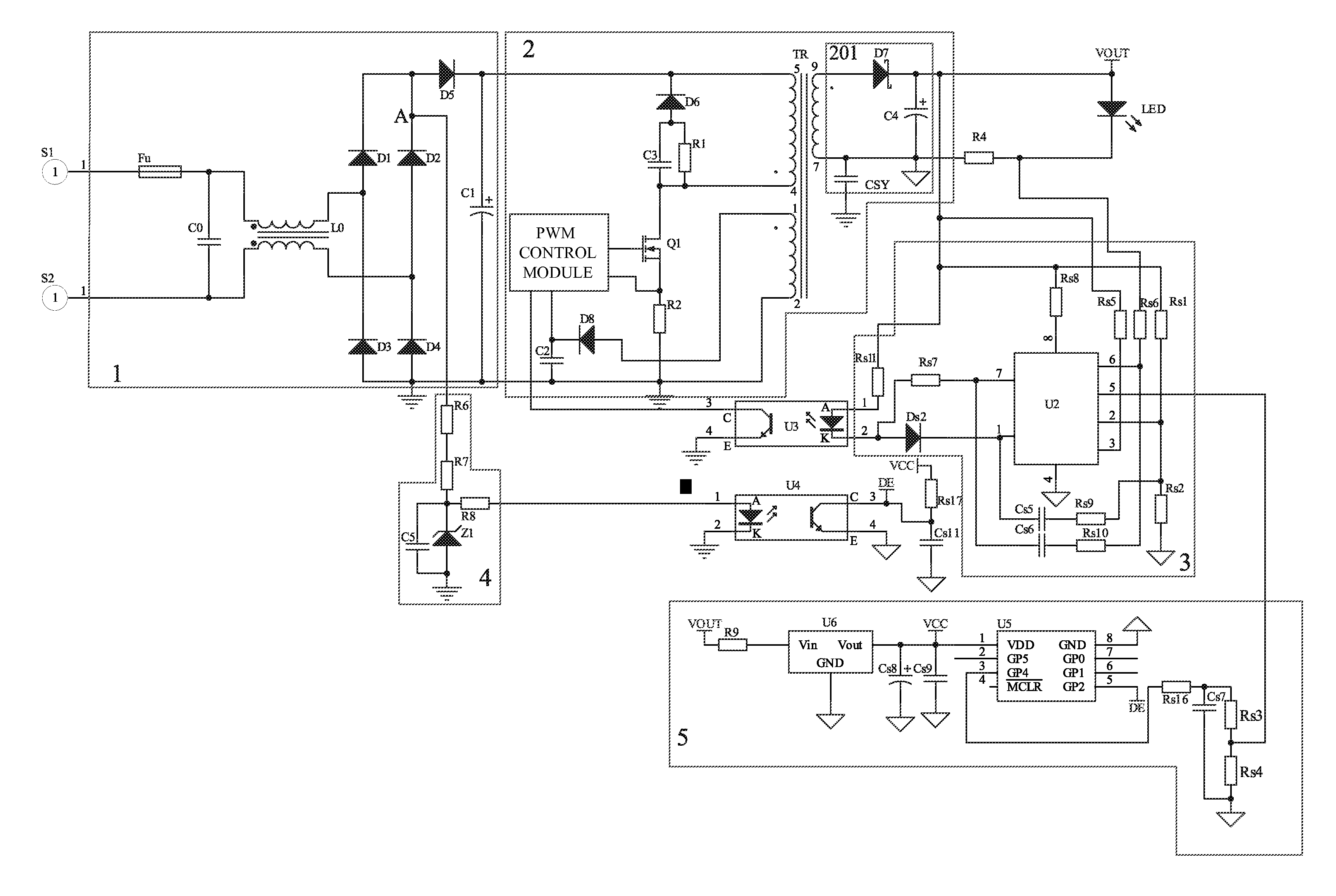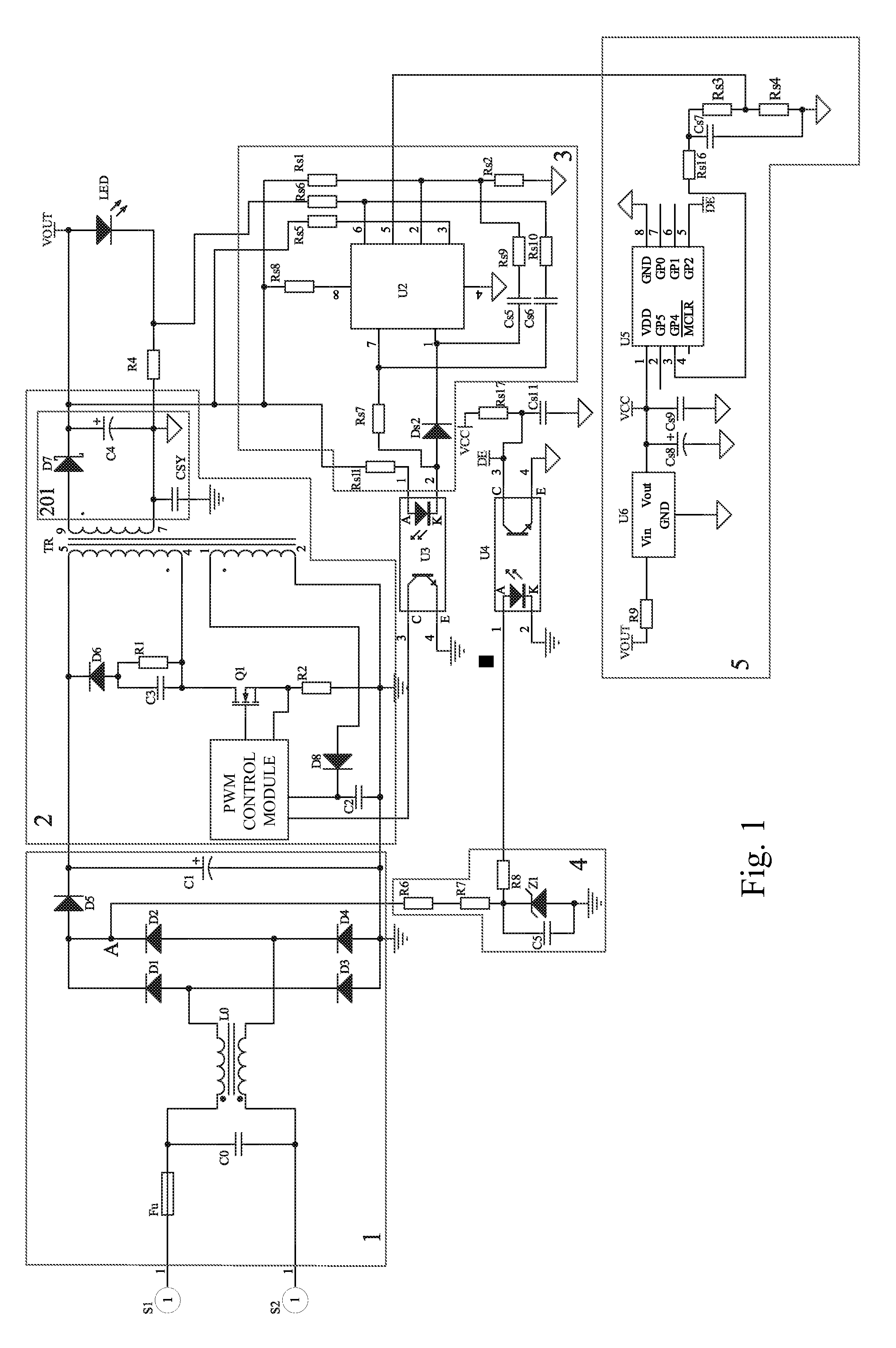Stepped dimming device for LED lamp
- Summary
- Abstract
- Description
- Claims
- Application Information
AI Technical Summary
Benefits of technology
Problems solved by technology
Method used
Image
Examples
Embodiment Construction
[0028]Generally, there are two approaches for controlling the brightness of a single LED. One of the approaches is to make use of the visual persistence of human eyes to realize brightness control with a pulse width modulation, namely to periodically change the pulse width (i.e. duty cycle) of emitted light. The human eyes would not get aware that a light emitting element is flickering provided that the cycle of light emission is short enough (i.e. the refresh rate is high enough). Since the pulse width modulation is preferably controlled in a digital way, a microcontroller is generally employed to provide driving signals for LED display, for example, almost all of the LED displays are effecting brightness control by means of pulse width modulation. The other approach would change the current flowing through the LED, namely to adjust the brightness of the LED lamp by controlling the output current of the power supply of the LED lamp. Except the saturation phenomenon found in red LED...
PUM
 Login to View More
Login to View More Abstract
Description
Claims
Application Information
 Login to View More
Login to View More - R&D
- Intellectual Property
- Life Sciences
- Materials
- Tech Scout
- Unparalleled Data Quality
- Higher Quality Content
- 60% Fewer Hallucinations
Browse by: Latest US Patents, China's latest patents, Technical Efficacy Thesaurus, Application Domain, Technology Topic, Popular Technical Reports.
© 2025 PatSnap. All rights reserved.Legal|Privacy policy|Modern Slavery Act Transparency Statement|Sitemap|About US| Contact US: help@patsnap.com



